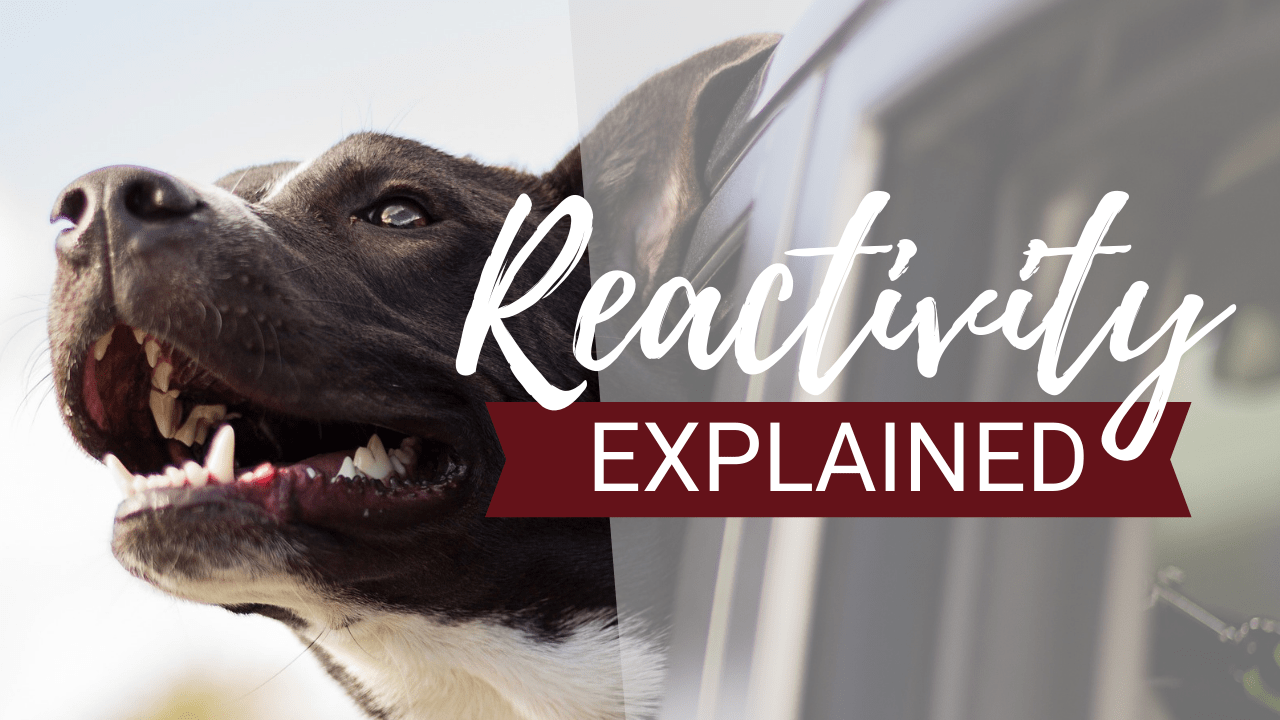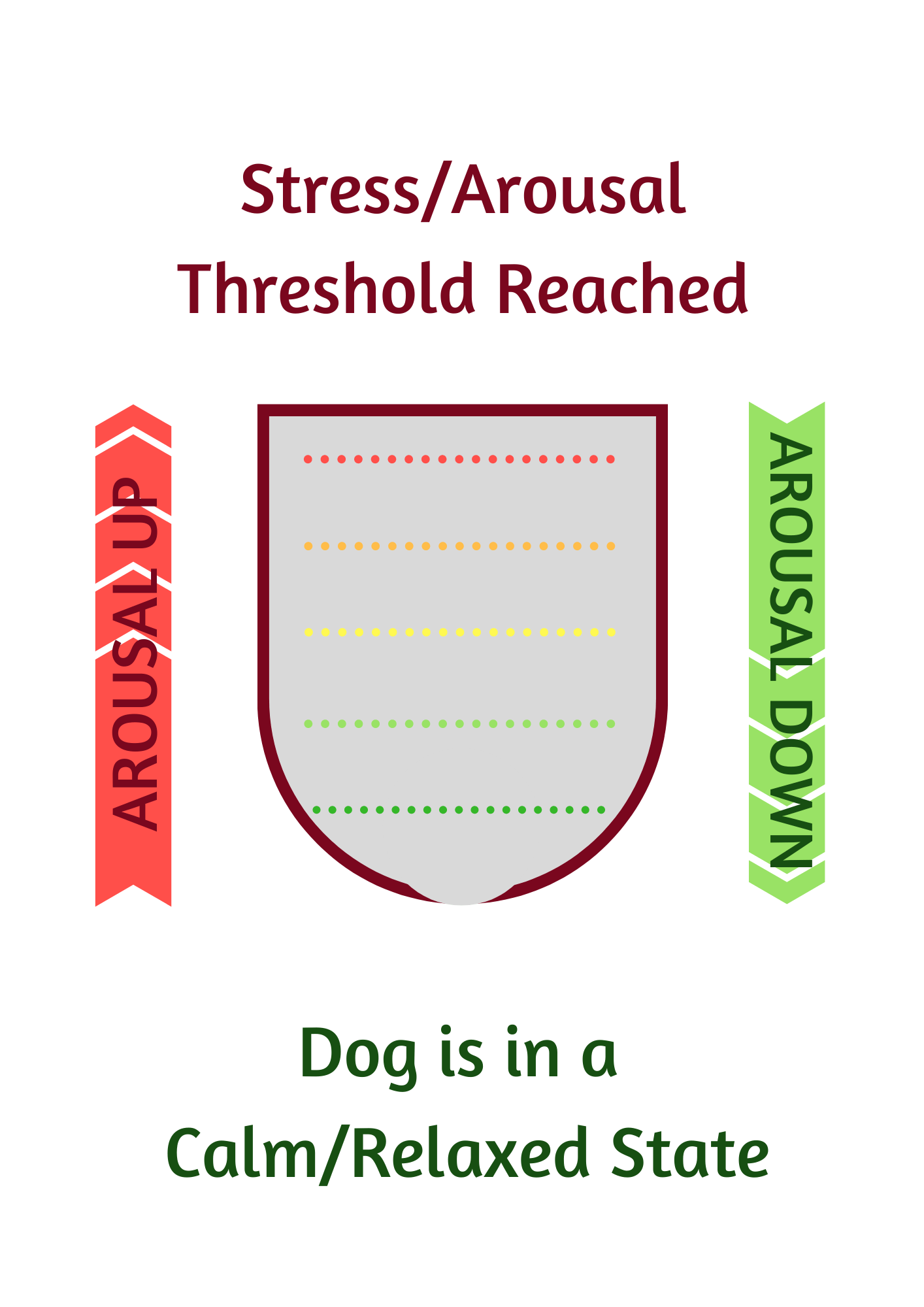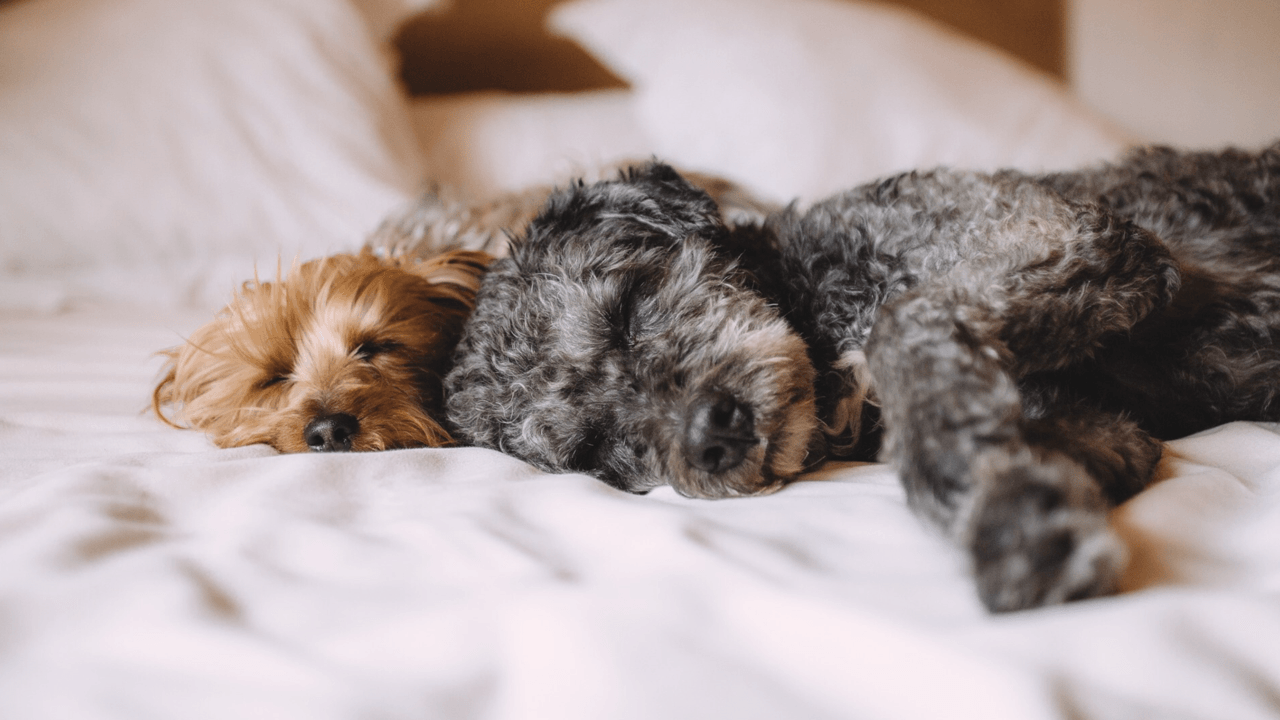Reactive Dog Training: The Stress Bucket Explained

If you own an unpredictable dog and you’re looking for help on how to get to grips with reactive dog training, then this is the perfect place to get started! As dog owners, one of the most frustrating things about ‘bad’ behaviour in our dogs, is how incalculable it can be, especially for those of us who own reactive dogs. It could be that 75% of the time you are able to walk your dog nicely (or at least reasonably!) past other people, or other dogs, or moving vehicles… whereas on other occasions, for no reason you can visibly fathom, your dog absolutely loses the plot when he sees any of these triggers, and becomes a barking, lunging mess.
Whether you own a dog who is always reactive, or one who sometimes copes with such situations better than at other times, this article is for you. The thing that so many owners forget to consider when it comes to their dog’s behaviour, is their current level of arousal, and how key this is in determining how your dog will choose to respond to any given situation.
The Stress Bucket: What Is It & How Does It Affect Your Dog?
Imagine that each dog carries a bucket. In terms of reactive dog training, we may call this a stress bucket, or an arousal bucket. At the beginning of the day the bucket is empty, and the dog is calm and content. Over the course of the day, the dog will experience a range of encounters that will begin to fill his arousal/stress bucket. These could be anything from a delivery man at the door, noisy children, someone stepping on his tail, being home alone while his owners are at work, seeing a cat/dog/ squirrel out on a walk… for different dogs, different triggers will contribute, and some will contribute far more than others.
It’s important to remember that the effects of increasing arousal are cumulative, and can be long-lasting – you may also have heard this idea before, referred to as ‘trigger stacking.’ Essentially, as the bucket fills, your dog’s stress hormone levels rise, their reactivity increases, and their ability to think decreases, so your dog ends up unable to respond to cues they would usually comprehend.
How does this play out in real life? If you take your dog on your usual Sunday morning walk, after a weekend where he has not been left alone, the postman hasn’t made any deliveries, and you haven’t encountered any cats, other dogs, or exciting squirrels on your way to the field in which you intend to let him off-lead, your dog is likely to behave pretty well, and respond to cues that have been properly trained and reinforced, as you’d expect.
If we make a few alterations to this situation – you head off to the same field together, but this time it’s on a Wednesday and your dog has been left home alone for the past 4 hours whilst you were at work, in which time the postman knocked on the door to make a delivery. The streets are now darker, and you’ve had to pass a group of noisy children who all clambered to stroke him, as well as the big dog from down the street who always barks. By the time you arrive at the field, the cumulative cups of stress that have been poured into your dog’s bucket from all those events have caused the bucket to fill – he does not have the clear, relaxed head he had on Sunday and, as a result, is far less likely to be responsive to your cues, or able to make the best decisions about his behaviour.
Dogs with full buckets are stressed, anxious, unable to relax, more prone to react, and unable to think as effectively as dogs who are calm.
It’s important to remember that it can take DAYS (not hours) for these stress levels to drop to an acceptable level.
With a reactive dog, this can mean that a high-stress encounter with another dog on a walk on Sunday morning, can cause problem behaviours well into Monday evening, and can even mean that if they encounter another dog later that walk, that day, or even the next day, their stress response will be GREATER, because their bucket is already FULL.
So the key in keeping your dog happy and, ultimately, healthy is keeping the bucket from overflowing – the emptier, it is the better.
Reactive Dog Training: How Can Concept Training Help?
With concept training, we work to build key character concepts in your dog; when it comes to reactive dog training, working on concepts that will help him or her to manage the contents of their bucket efficiently, will better position them to manage their reactive behaviours.
Arousal up/arousal down:
These are fun games you can play to help your dog practise making the transition between high arousal levels and low arousal levels. An example could include engaging in a high energy game of tug, repeatedly broken up with a couple of 2-minute sessions of calm stroking on his mat. Your dog may find this tricky at first, but practise is key!
In terms of our stress bucket, you could consider games like this to help increase the size of the hole in the bottom of the bucket. The bigger the hole, the quicker all those stressful encounters poured into the bucket can pour back out again. In other words, this helps to develop the speed with which your dog can return to a calm state after a stressful encounter.
Thinking in arousal:
If we practise thinking in arousal with our dogs, this will help to increase their threshold for stress…. aka the bucket gets BIGGER! This could include teaching a few basic commands (sit, down, bow, for example) and then asking for these during play. If your dog loves to chase tennis balls, when he excitedly returns the ball to you, try asking for a behaviour before you throw it again. Is he too excited to think straight, or can he do it? The more you work cues into your high-energy playtime, the more you grow that valuable skill of being able to think in arousal.
Building Optimism:
An absolute must for reactive dog training, this is one of our favourite concepts at Listen Dog HQ – who doesn’t love a healthy dose of optimism?! The more optimistic your dog is, the fewer things pay into the stress bucket. There are oodles of ways you can build your dog’s optimism – check out a few of them here! Essentially the key is to teach your dog that novelty is rewarding, so that ultimately he finds less experiences stressful.
Calmness:
Last but not least, calmness is key to owning a contented dog. With a calm dog, the bucket generally stays empty, because your dog places value in calmness and calm activities. How do we grow calm? Think carefully about when you reward your dog. If you adopt our Ditch the Bowl approach, you can use his daily food allowance to show him that calm behaviour pays. For example, don’t engage with the dog who pesters you for playtime, food or attention; instead wait him out until he eventually takes himself away to lay down, then calmly walk over and sprinkle a handful of his food on his bed. Of course, this may excite him all over again, but the more you reward the right behaviour, the more you will grow it in the long run.
Reactive dog training is not a quick and easy journey; reactive dogs are often very close to threshold; their bucket is either teetering on being full or already overflowing, more than likely due to an accumulation of triggers that he’s been exposed to throughout the day. Unfortunately, many owners can perpetuate this stress by wanting to root out the triggers and ‘work on them’, but the best place to start is always to ensure you are working with an empty arousal bucket.
So often, reactive dogs are given very little opportunity to empty their buckets, away from the things they find triggering. Teach your dog how to do that, and you’ll find working through their reactivity so much easier.
Need more help with your dog training? Check out our printable planning resources right here, and follow us on Instagram and Facebook for daily tips!








